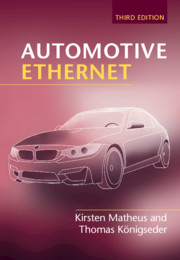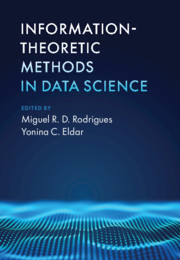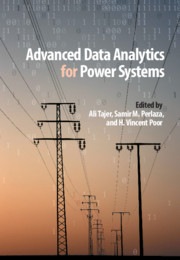Refine search
Actions for selected content:
6791 results in Communications and signal processing
11 - Can You Trust Me?
-
- Book:
- Hey Cyba
- Published online:
- 26 March 2021
- Print publication:
- 08 April 2021, pp 165-182
-
- Chapter
- Export citation
21 - Prosumer Behavior: Decision Making with Bounded Horizon
- from Part VI - Game Theory
-
-
- Book:
- Advanced Data Analytics for Power Systems
- Published online:
- 22 March 2021
- Print publication:
- 08 April 2021, pp 524-544
-
- Chapter
- Export citation
3 - How My BrainWorks
-
- Book:
- Hey Cyba
- Published online:
- 26 March 2021
- Print publication:
- 08 April 2021, pp 20-45
-
- Chapter
- Export citation
14 - A Sparse Representation Approach for Anomaly Identification
- from Part IV - Signal Processing
-
-
- Book:
- Advanced Data Analytics for Power Systems
- Published online:
- 22 March 2021
- Print publication:
- 08 April 2021, pp 340-360
-
- Chapter
- Export citation
19 - Distributed Power Consumption Scheduling
- from Part VI - Game Theory
-
-
- Book:
- Advanced Data Analytics for Power Systems
- Published online:
- 22 March 2021
- Print publication:
- 08 April 2021, pp 483-503
-
- Chapter
- Export citation
Index
-
- Book:
- Hey Cyba
- Published online:
- 26 March 2021
- Print publication:
- 08 April 2021, pp 231-244
-
- Chapter
- Export citation
9 - How Do You Say That In . . . ?
-
- Book:
- Hey Cyba
- Published online:
- 26 March 2021
- Print publication:
- 08 April 2021, pp 136-151
-
- Chapter
- Export citation
10 - Let’s Chat
-
- Book:
- Hey Cyba
- Published online:
- 26 March 2021
- Print publication:
- 08 April 2021, pp 152-164
-
- Chapter
- Export citation
6 - What Does That Mean?
-
- Book:
- Hey Cyba
- Published online:
- 26 March 2021
- Print publication:
- 08 April 2021, pp 82-103
-
- Chapter
- Export citation
5 - Quickest Detection and Isolation of Transmission Line Outages
- from Part II - Data-Driven Anomaly Detection
-
-
- Book:
- Advanced Data Analytics for Power Systems
- Published online:
- 22 March 2021
- Print publication:
- 08 April 2021, pp 101-123
-
- Chapter
- Export citation
5 - Sample Complexity Bounds for Dictionary Learning from Vector- and Tensor-Valued Data
-
-
- Book:
- Information-Theoretic Methods in Data Science
- Published online:
- 22 March 2021
- Print publication:
- 08 April 2021, pp 134-162
-
- Chapter
- Export citation
Contributors
-
- Book:
- Information-Theoretic Methods in Data Science
- Published online:
- 22 March 2021
- Print publication:
- 08 April 2021, pp xix-xxii
-
- Chapter
- Export citation
Part V - Large-Scale Optimization
-
- Book:
- Advanced Data Analytics for Power Systems
- Published online:
- 22 March 2021
- Print publication:
- 08 April 2021, pp 361-362
-
- Chapter
- Export citation
18 - Analytical Models for Emerging Energy Storage Applications
- from Part V - Large-Scale Optimization
-
-
- Book:
- Advanced Data Analytics for Power Systems
- Published online:
- 22 March 2021
- Print publication:
- 08 April 2021, pp 455-480
-
- Chapter
- Export citation
8 - Computing Choice: Learning Distributions over Permutations
-
-
- Book:
- Information-Theoretic Methods in Data Science
- Published online:
- 22 March 2021
- Print publication:
- 08 April 2021, pp 229-262
-
- Chapter
- Export citation

Automotive Ethernet
-
- Published online:
- 06 April 2021
- Print publication:
- 22 April 2021

Hey Cyba
- The Inner Workings of a Virtual Personal Assistant
-
- Published online:
- 26 March 2021
- Print publication:
- 08 April 2021

Information-Theoretic Methods in Data Science
-
- Published online:
- 22 March 2021
- Print publication:
- 08 April 2021

Advanced Data Analytics for Power Systems
-
- Published online:
- 22 March 2021
- Print publication:
- 08 April 2021
Conclusion: Techno-Romantic Cinema from the Silent to the Digital Era
-
- Book:
- Special Effects and German Silent Film
- Published by:
- Amsterdam University Press
- Published online:
- 13 April 2021
- Print publication:
- 22 March 2021, pp 273-278
-
- Chapter
- Export citation
